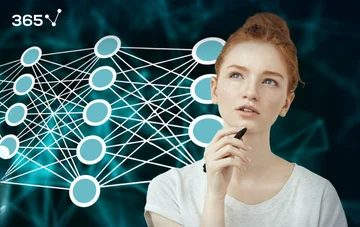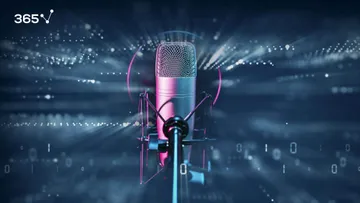The artificial intelligence field is growing rapidly, with algorithms evolving to match and even surpass human capabilities—like ChatGPT and its recently released feature. Most AI tools we use today, such as Google Translate and virtual assistance bots like Siri, are built on deep learning frameworks.
Deep learning (DL) is an advanced subfield of machine learning. DL models can evolve on their own, without the need for continued programming. With a virtually unlimited capacity to learn, deep learning networks can make sense of mind-boggling amounts of data and open the doors to a whole new level of analytics.
The algorithms can be used for enhanced computer vision, voice recognition, natural language processing, and analytics tasks, which have applications ranging from autonomous vehicles to medical research and diagnostics.
This article discusses deep learning functions and presents the best deep learning frameworks for building your own algorithms or neural networks.
Table of Contents
- Deep Learning Overview
- What Is a Deep Learning Framework?
- Top 10 Deep Learning Frameworks
- Deep Learning Frameworks: Next Steps
Deep Learning Overview
The machine learning process involves taking data to construct a model in order to analyze or infer information, and ultimately, make a prediction. Deep learning expands regular ML to continuously add to the model’s capabilities of understanding complex data features. This enables DL algorithms to input not only numbers, but also images, text, sound, or video and return other images, text, sound, videos, or numbers as outputs.
Thanks to this, DL models can solve various real-world problems, such as detecting diseases, driving cars, locating pests in a field, and more. They are also outstanding in computer vision tasks like classifying objects and transcribing text from an image.
And recent advances have reached the point where deep learning and AI can match or even outperform humans in many tasks, including coding, producing original text, analyzing data, and building reports.
But deep learning is not simple to implement as it requires large amounts of data and substantial computing power. Using a central processing unit (CPU) is rarely enough to train a deep learning net. Many contemporary solutions rely on high-end graphics processing units (GPUs). There are also tensor processing units (TPUs), specifically designed to accelerate the work of TensorFlow users.
Another prerequisite for building a DL model is being familiar with deep learning frameworks. Before we present the most popular ones, let’s define what frameworks are and how they work.
What Is a Deep Learning Framework?
A deep learning framework is a software library that equips data science and ML professionals with the tools to train deep learning models. These packages feature layers, activation functions, optimizers, and loss functions, utilized to create various types of deep neural network architectures.
Deep learning frameworks typically have a programming interface for training models based on coding languages like Python. They also offer functionalities for data preprocessing, data augmentation, model evaluation, and model deployment—essential steps in building DL models. In short, DL libraries let you upload data and train your model with little effort.
Let’s take a look at the most popular deep learning frameworks.
Top 10 Deep Learning Frameworks
There are several deep learning frameworks suitable for people with little experience with machine learning technology.
While there are plenty of libraries available, we’ll examine ten of the best ones.
TensorFlow
TensorFlow is a Python-based, open-source deep learning framework supported by Google, which also integrates well with third-party platforms. It has an active community contributing to updates and offering guidance and support.
In fact, it’s one of the most popular deep learning frameworks, used by major corporations like Airbnb, Intel, and Twitter. In addition, most Google technologies allegedly rely on it. For instance, Google Translate uses TensorFlow capabilities such as:
- Natural language processing
- Text classification and summarization
- Speech, image, and handwriting recognition
- Forecasting
- Tagging
Keras
Keras is another widely used open-source deep learning framework. In 2019, TensorFlow 2.0 came out, boasting the Keras syntax and signifying the importance of the package to the community.
While it was built on TensorFlow, this library ultimately achieved something its predecessor couldn’t—it’s remarkably simple to use. Keras requires very little code and is one of the easiest packages for beginners.
Caffe
If you were into deep learning before it was cool, you’ve probably used Caffe—an open-source deep learning framework known for its speed. It can process more than 60 million images a day, making it very suitable for image recognition.
The package works with C, C++, Python, MATLAB, and CLI, and has contributed to amazing projects such as Google’s DeepDream. Its expressive architecture allows to train neural nets without hard coding, while its extensible code encourages active development.
Caffe is popular with deep visual recognition applications but doesn’t support fine granular network layers like those found in TensorFlow or Microsoft Cognitive Toolkit. As a result, establishing complex layer types has to be done in a low-level language.
PyTorch
PyTorch is an open-source library developed by Facebook, known for its simplicity, flexibility, and customizability. The deep learning framework competes with TensorFlow in terms of level of adoption within the community.
PyTorch has a clean architectural style, making the training and development of DL models easy. The Py stands for Python, so anyone with a basic understanding of the programming language can work with it.
If you're a complete Python beginner, check out our Ultimate Python Programming Guide to gain an idea of where to start.
Microsoft Cognitive Toolkit
Microsoft Cognitive Toolkit (previously known as CNTK) is an open-source deep learning framework supported by interfaces such as Python, C++, and CLI. It can train recurrent and convolutional neural networks for almost any deep learning task, including image, speech, and text-based analysis.
Microsoft Cognitive Toolkit provides higher performance and scalability than TensorFlow while operating on multiple machines. This package can seamlessly handle images, handwriting, and speech recognition problems.
MXNet
The Apache Foundation’s MXNet is an open-source deep learning framework for flexible research prototyping and production. It supports multiple programming languages, including Python, Scala, Julia, Clojure, Java, C++, R, and Perl, making it accessible to both high-powered and low-powered devices.
MXNet supports imperative and symbolic programming, allowing for dynamic computation graphs during prototyping and static computation graphs for optimized execution. Moreover, it is designed for distributed computing—i.e., the package can be scaled across multiple GPUs and CPUs. A growing framework, MXNet has an active community of developers and researchers that produce extensive documentation, tutorials, and resources.
Theano
Theano is an open-source deep learning framework and Python library built upon NumPy syntax. It was developed at Mila, the state-of-the-art AI research community at the University of Montreal. With this package, users can efficiently optimize mathematical computations and turn them into code.
Theano’s development was completed in 2017, but it is widely used to this day, and its contributions to deep learning advancements are undeniable. In addition, multiple deep learning frameworks, such as Aesara, are built upon Theano.
Deeplearning4j
Deeplearning4j (DL4J) is an open-source deep learning framework that works with the Java language and Java Virtual Machine ecosystem. It provides efficient and scalable deep learning capabilities for enterprise applications. DL4J supports distributed computing environments, which allows for efficient model training across multiple machines or clusters.
It has the unique capability to train models with Java while allowing for integration with the Python ecosystem. DL4J is also compatible with TensorFlow, Keras, and other deep learning frameworks.
Chainer
Chainer is an open-source package developed by the Japanese company Preferred Networks. It’s a flexible and intuitive library that handles dynamic computation graphs, making it particularly suitable for rapid prototyping and experimentation.
In fact, Chainer was one of the first deep learning frameworks that adopted the define-by-run approach. Additionally, it has an easy-to-use API and supports various architectures, including feedforward networks, CNNs, and RNNs.
The framework is based almost entirely on Python, making it accessible to data and AI professionals who are well-versed in the popular programming language. As integration in Python libraries is quick and easy, you can leverage Chainer’s computational abilities to preprocess, analyze, and visualize your data.
GGML
Developed by Georgi Gerganov, GGML is an open-source tensor library designed for complex machine learning and deep learning models. It’s ideal for large-scale training and high-performance computing tasks.
The GGML framework is written in C and offers 16-bit float support. This allows for seamless compatibility across platforms and significantly increases the training speed while reducing memory requirements.
Deep Learning Frameworks: Next Steps
In this article, we’ve explored the definition of deep learning and the best deep learning frameworks you should know. Choosing which package to work with depends on your personal or business needs.
If you’re just getting started with deep learning and AI, pick a user-friendly library like TensorFlow—one of the most popular deep learning frameworks. Learning how to work with this package is an enormous benefit for anyone who wants to build a data science career.
Study the TensorFlow 2.0. code, syntax, and features with our Deep Learning with TensorFlow 2 course. Develop your understanding of deep learning and practice backpropagation, overfitting, initialization, stochastic gradient descent, batching, etc.
Sign up now to get a taste of our teaching style or log in with your 365 account to start learning.








